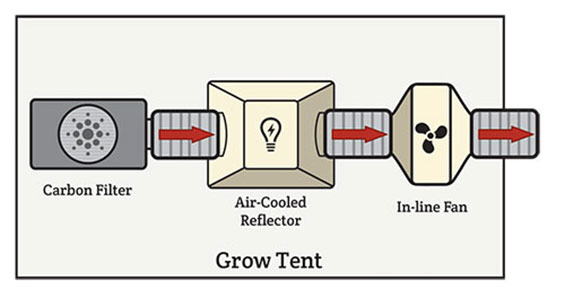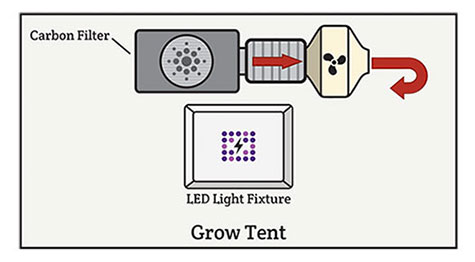Description
The Can-Fan High Output RS-Series are centrifugal fans utilizing our proven German design, Swiss components and precision manufacturing.
The Can-Fan High Output series are centrifugal fans utilizing our proven German design, Swiss components, and precision manufacturing. The High Output Can-Fan® uses a high-performance motor for use in more demanding applications. They have carried AMCA certified numbers longer than most other fans have been around and you can be sure you’re getting every CFM we claim to deliver. Can-Fan® can be easily installed in minutes using the included mounting bracket. They have a powder-coat finish and are 100% speed controllable. Rated for continuous operation, they utilize an extremely reliable external rotor motor and reverse curve blade.
Details
Upgraded Motor for improved performance!
- AMCA Certified performance
- Proven Centrifugal Design
- Power Cord Attached
- German Engineered
- Reliable Swiss Motor
- Powder Coat Finish
- Easy installtion
- 5-year warranty
- Available in sizes from 4″ – 12″
Centrifugal Fans
The pressure of an incoming airstream is increased by a fan wheel, a series of blades mounted on a circular hub. Centrifugal fans move air radially — the direction of the outward flowing air is changed, usually by 90°, from the direction of the incoming air. The airflow created by centrifugal fans is directed through a system of ducts or tubes. This helps create a higher pressure airflow than axial fans. Despite a lower flow rate, centrifugal fans create a steadier flow of air than axial fans. Centrifugal fans also require a higher power input.
Model Specifications
Can-Fan RS 4″ HO 155 CFM
| CFM: | 165 at 0wg |
| RPM: | 2849 |
| Maxx Watts: | 80 |
| Amps: | 0.71 @ 120v AC 60 Hz |
| Diameter | 11.28" |
| Length: | 8.19" |
| Max. Height: | 12.75″ |
| Blade Design: | Centrifugal |
| Weight: | 7 lbs. |
| Inlet/Outlet | 4″ |
Recommended Filters:
Exhaust
- Can-Lite 2600
- Can-Lite 9000
- Can-Lite 4×15
- Can 33
Recirculate
- Can-Lite 1500
Can-Fan RS 6″ HO 392 CFM
| CFM: | 427 at 0wg |
| RPM: | 2694 |
| Maxx Watts: | 134 |
| Amps: | 1.19 @ 120v AC 60 Hz |
| Diameter | 15.1″ |
| Length: | 9.1″ |
| Blade Design: | Centrifugal |
| Weight: | 11 lbs. |
| Inlet/Outlet | 6″ |
Recommended Filters:
Recirculating
- Can-Lite 6x16
- Can-Lite 6x24
- Can 33
Can-Fan RS 8″ HO 722 CFM
| CFM: | 722 at 0wg |
| RPM: | 2811 |
| Maxx Watts: | 277 |
| Amps: | 2.32 @ 120v AC 60 Hz |
| Diameter | 15.2″ |
| Length: | 9.4″ |
| Blade Design: | Centrifugal |
| Weight: | 12.4 lbs. |
| Inlet/Outlet | 8″ |
Recommended Filters:
Recirculating
- Can-Lite 8x25
- Can-Lite 8x40
- Can 50
- Can 66
Exhaust
- Can 75
- Can 100
- Can 125
Can-Fan RS 10″ HO 761 CFM
| CFM: | 761 at 0wg |
| RPM: | 2923 |
| Maxx Watts: | 286 |
| Amps: | 2.41 @ 120v AC 60 Hz |
| Diameter | 15.2″ |
| Length: | 9.4″ |
| Blade Design: | Centrifugal |
| Weight: | 13.6 lbs. |
| Inlet/Outlet | 10″ |
Recommended Filters:
Recirculating
- Can 50
- Can 75
Exhaust
- Can-Lite 10x40
- Can 100
- Can 125
- Can 150
Can-Fan RS 12″ HO 975 CFM
| CFM: | 1031 at 0wg |
| RPM: | 3115 |
| Maxx Watts: | 352 |
| Amps: | 2.98 @ 120v AC 60 Hz |
| Diameter | 17.5″ |
| Length: | 10″ |
| Blade Design: | Centrifugal |
| Weight: | 14 lbs. |
| Inlet/Outlet | 12″ |
Recommended Filters:
Exhaust
- Can-Lite 12x40
- Can 100
- Can 125
- Can 150
Determining your requirement - Exhaust vs Recirculating (Scrubbing)
You will need to determine whether or not you are exhausting (going from a contaminated environment to a sterile environment in only a single pass through the filter) or recirculating, aka “scrubbing” (exhausting the system back into the contaminated space).
Exhaust
In an exhaust setting the air only passes through the filter one time so it is imperative that we remove as close to 100% of the contaminate as possible with that one chance. This requires that the contaminant have a certain time in contact with the carbon in order to be fully adsorbed. Our filters are marked with both exhaust and recirculating ratings for just this reason. If you are using this system to exhaust, DO NOT exceed the exhaust rating for the filter, the more this rating is exceeded the less contaminant will be adsorbed because the two will not have enough contact timefor adsorption to fully take place.

Recirculating
In a recirculating system , the contact time is not such a crucial number as we are taking contaminated air, filtering it, and releasing it back into what is typically and constantly decontaminated environment. It is for this reason that it is not necessary to remove 100% of the contaminant in a single pass. Instead we double the exhaust rating which will reduce the contact time, the goal here is to still remove a large portion of the contaminant but to get raise the cycle rate of air through the filter above the rate of emission from the source. Now, instead of removing 99.9% of the contaminant in a single pass we are getting closer to 60% but we are getting twice as many cycles through the filter in the same amount of time and over time, reducing the overall build-up of contaminant in the environment.

Sizing Your Space
Once you’ve determined the type of system you need, it’s time to size your space.
Typically for exhaust we recommend a simple length x width x height /3 calculation. This will give you the amount of air (cubic feet per minute, CFM) that you will need to move to properly ventilate your space allowing for a three-minute air exchange (all the air in the space is exchanged for fresh air every three minutes). This is the number you will match your filter to.
Example:
Room size: 10’x12’x8’ (960 cubic feet)
960 cubic feet / 3 minutes = 320CFM (Minimum recommended CFM to exchange the air every 3 minutes)
For recirculating systems, you can use the same length x width x height but divide by 1.5. This will give you a high cycle rate while still ensuring the removal of a majority of contaminant with each pass through the filter.
